Deer Island Light
I keep coming back to the lighthouses of New England, taking their photos, writing about them: how they are a fundamentally important part of this country, a part of her rocky skeleton and her sandy skin.
Alas, lighthouses are an endangered species nowadays. There were 11 lighthouses on Boston Harbor 1909 chart. Today, only three of them remain.
Here is the story of one of those who has not made it: Deer Island Light. I already told you a short version of it in my report on Deer Island; this is a longer, expanded version with new photos. Though sadly the lighthouse is gone, the light itself and the fog horn have survived and still help the navigation in our harbor.
When you are sailing to Boston from north, Boston Harbor starts with Deer Island. It is easy to run aground approaching it at low tide: the island is surrounded by shallow waters and underwater rocks. In 1832 they built an unlit stone marker at the south end of the shoal, but more was needed: a light and a fog signal. Eventually a remarkably-shaped lighthouse was built at that spot. It was first lit January 26, 1890. Its fog bell was activated by a special mechanism and sounded every 10 seconds.
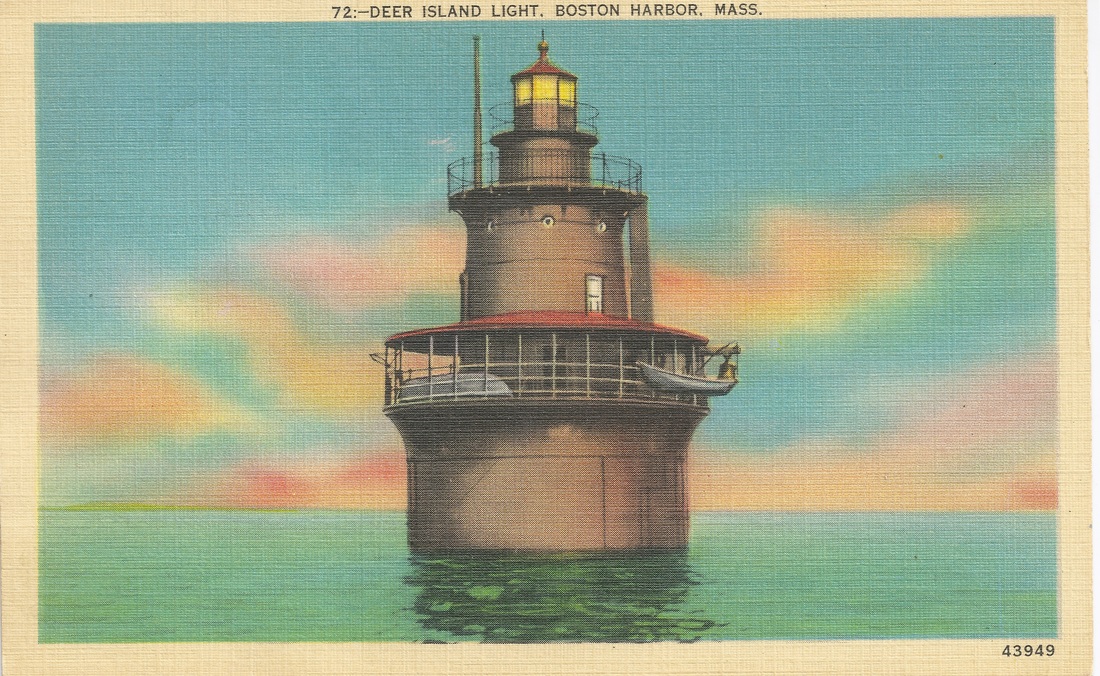
Back then there were dozens of lighthouses of this design built in the US; because of their shape they were called sparkplugs or sometimes bugs.
The great Joshua Slocum, the first man to sail around the world single-handed, mentions this lighthouse as the first landmark in his journey (1895):
A thrilling pulse beat high in me. My step was light on deck in the crisp air. I felt that there could be no turning back, and that I was engaging in an adventure the meaning of which I thoroughly understood. I had taken little advice from any one, for I had a right to my own opinions in matters pertaining to the sea. …
The wind freshened, and the Spray rounded Deer Island light at the rate of seven knots. Passing it, she squared away direct for Gloucester to procure there some fishermen’s stores. Waves dancing joyously across Massachusetts Bay met her coming out of the harbor to dash them into myriads of sparkling gems that hung about her at every surge.
Each lighthouse has its own history — lists of keepers, shipwrecks, heroic life-savings. This history is usually pretty esoteric and only interesting to the historians; to an unprepared reader it reads as exciting as Homer’s catalog of ships.
In the chronicles of Deer Island Light, a story of its keeper Joseph McCabe picked my attention. He was a young man who started his job at the lighthouse in 1908. In five years, he managed to get into the Boston Globe, when he bought a piano to “break the monotony of the lonely life in the isolated tower”, and had it delivered to the lighthouse.
In three years, McCabe was getting married. On a Sunday in February 1916, he left the lighthouse for Deer Island to help his fiancée with writing wedding invitations. In the afternoon, it suddenly got much colder, with a strong gale building up. McCabe hastened back to the lighthouse. When he reached the shore, he found out that rowboat has frozen dead to the beach.
It was a low tide; the shoal between the island and the lighthouse was partially exposed. McCabe borrowed a pair tall rubber boots and started walking to the lighthouse. As he stepped on the next rock, he slipped, fell into the freezing water and never stood up. They sent a boat to fetch him, but it was too late. Joseph’s McCabe body was never found. The lighthouse keeper’s service was dangerous indeed!
The last civil keeper of the Deer Island Light was Fred Bohm. During the first 1.5 years of World War II, his responsibilities included not just tending the lighthouse, but also patrolling surrounding waters and looking out for German submarines. The next photo shows the anti-submarine net right next to the lighthouse. Nets like this one were an important part of Boston Harbor’s anti-submarine defense. One day, a boat with Bohm’s people capsized and sunk in a foul weather; four of them had to cling to the net for two hours until they were saved.
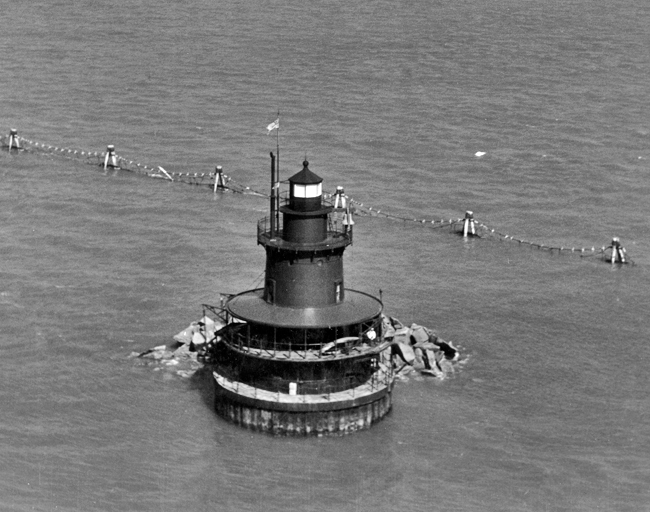
In 1982 the progress has came to Deer Island Light. The lighthouse had been long automated, and gradually falling apart. The Coast Guard had decided that the lighthouse didn’t deserve to be saved, and demolished it. The old foundation was the only remaining part of it; on top of the that, they put this weird-looking fiberglass structure.
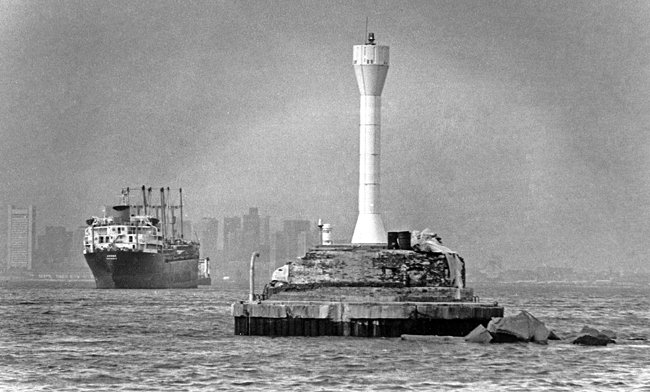
The new design resembled a candle from afar. It least, that was what I thought; I know reasonable people with different associations. In my opinion, it was not a lighthouse anymore, and so I never included it in my list of Boston Harbor lighthouses.
However, this candle, by that time brown-colored, was how I first encountered Deer Island Light when I started sailing in Boston harbor. For many years it was a welcome landmark when sailing out of the harbor; and even a more welcome landmark when returning back from the north, when it was the first sign of coming home.
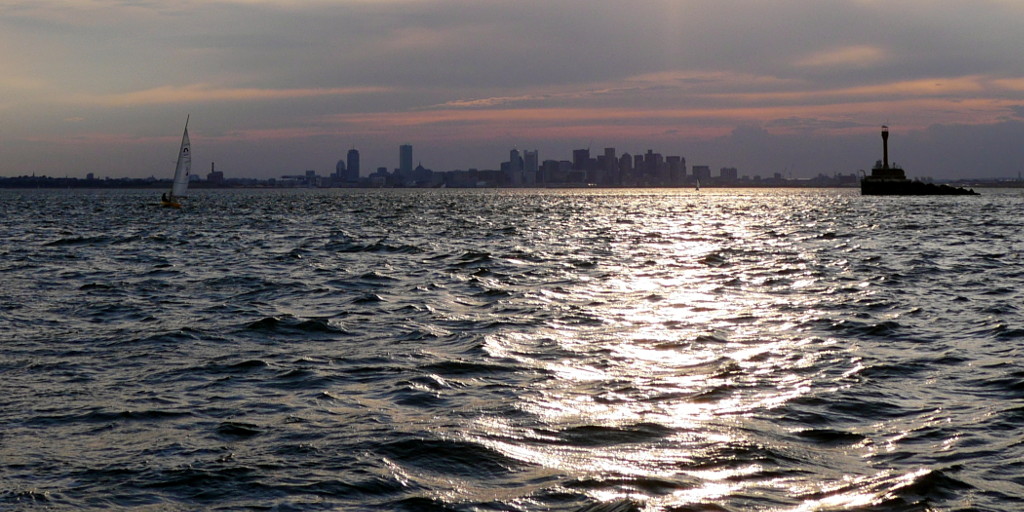
In 2015, a new trouble came. The candle itself got demolished; instead of it, the Coast Guard has put something looking non-quite-serious: a metal structure of the kind they call skeletal tower. As if to say, the bones are kind of, sort of present, but God didn’t give it neither flesh nor skin.
I remember when I first found it out. It was between seasons, in a winter. I biked to Deer Island to enjoy ocean views while I couldn’t sail. I was walking around the island with my camera, taking pictures. I knew where I will see the candle from, I already framed the shot in my mind. I raised the camera, and was shocked not to see it at all. I wouldn’t quite compare it to losing a friend; but was somebody I knew and enjoyed meeting occasionally. It still hurt.
Here are a few photos of the old lighthouse foundation and the new ugly tower from our sailing outings:
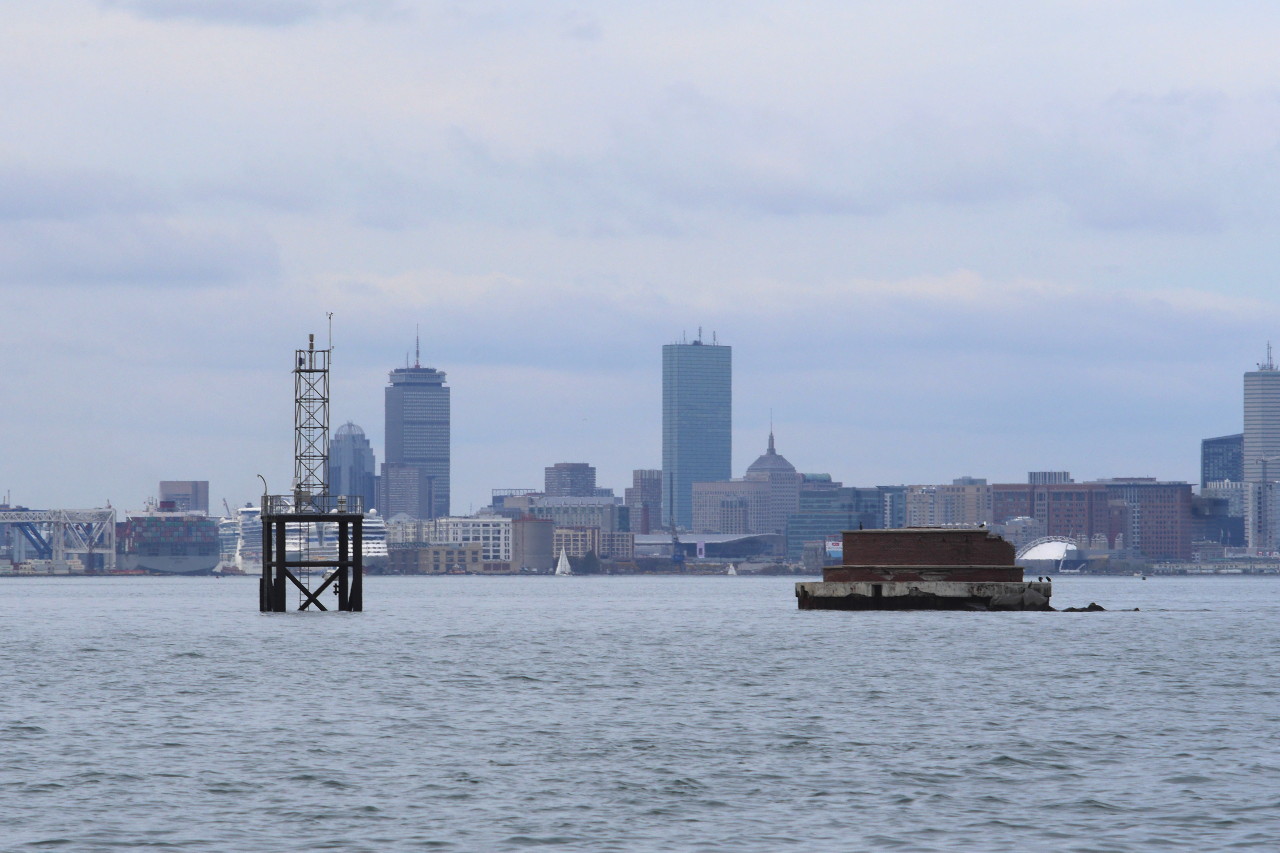
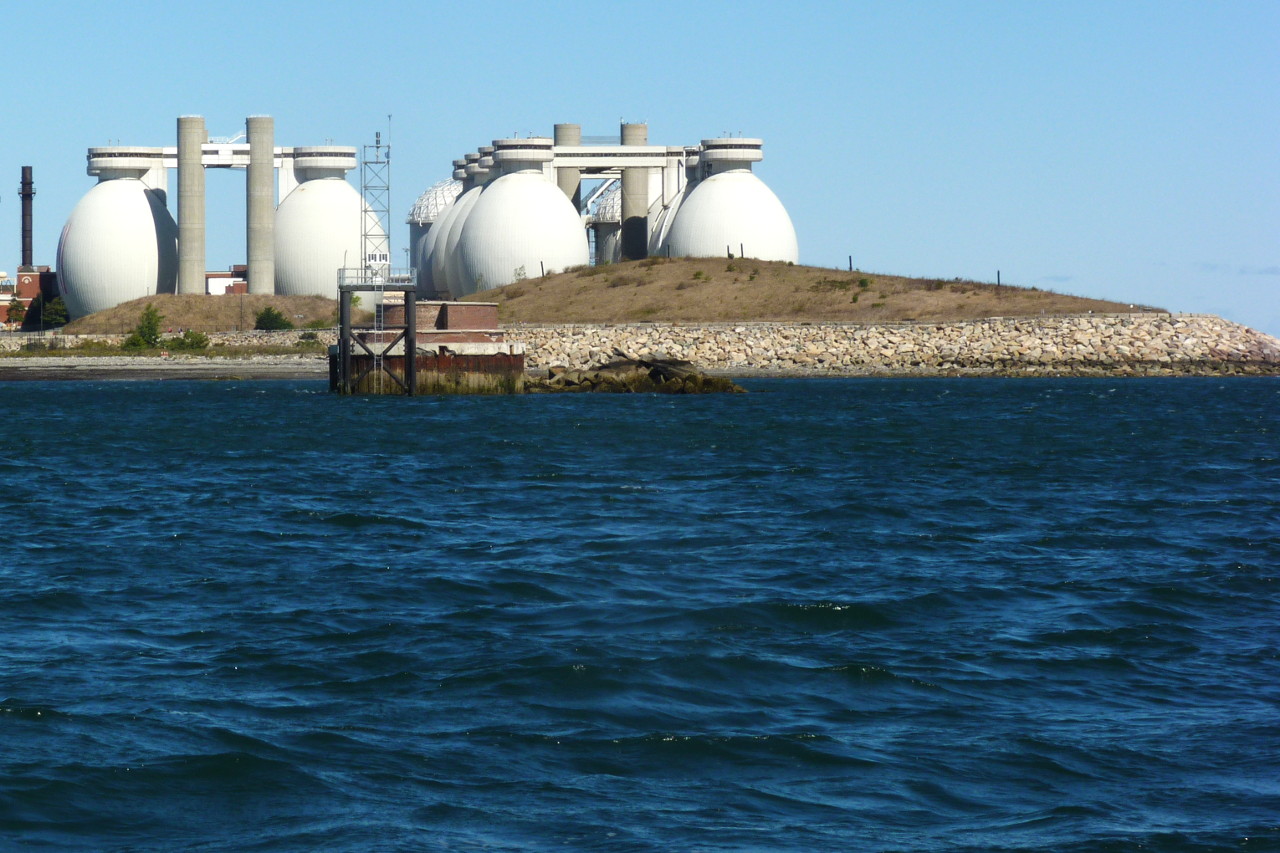
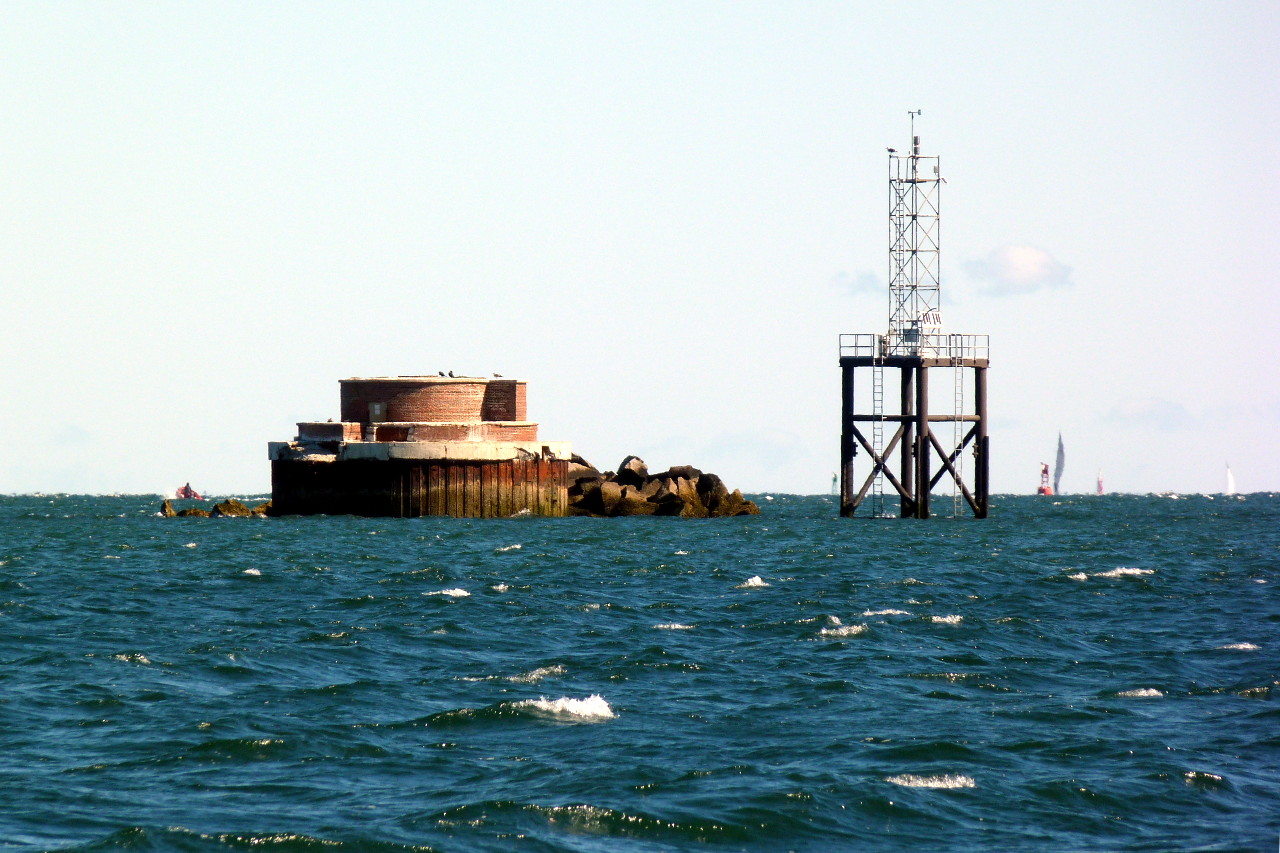
The Deer Island Light transformations — from the three-stories “sparkplug” with a keeper and an assistant to the automated “candle”, and then finally to the “skeletal tower”, which doesn’t even try to pleasant to the eye and which absolutely can’t be called a lighthouse anymore — are typical to the modern progress in general. The utilitarian efficiency takes over the aesthetics, history, romance and dangers of the lighthouse service, and there is no stopping it, no coming back. Surprisingly, in the eighteenth and nineteenth centuries the government could afford to maintain the existing lighthouses and to build new ones. Today, in the twenty-first centuries, there is no end to the budget deficit. There is not much money for lighthouses left.
While the loss of the historic lighthouse really hurts me as a citizen, as a sailor I must admit that the Coast Guard managed to preserve the most important things: the light itself, and the fog signal. The signal, however, doesn’t turn itself on automatically anymore; one now has to request it over VHF radio (channel 83A). What if you don’t have radio on your boat? Unlucky you, don’t get into a fog then.
The light is also not so simple: it’s sectoral, that is, depends on the compass bearing. If you look at in from inside the harbor, it flashes alternatively white and red. Outside of the harbor, when approaching Boston, it’s red if you are heading towards the shoal by Deer Island, and white otherwise, on a safe heading. This is actually useful in practice. Thank you that you care, Coast Guard!
And so, I’d like to conclude this essay with a nighttime photo of Deer Island Light. The light has dramatically changed since Joshua Slocum sailed by it. Deer Island itself has changed equally dramatically. But still, they both remain in their old places, and the same Atlantic waves, now as in Slocum’s time, beat into the boats coming out of Boston Harbor past the island and its light.
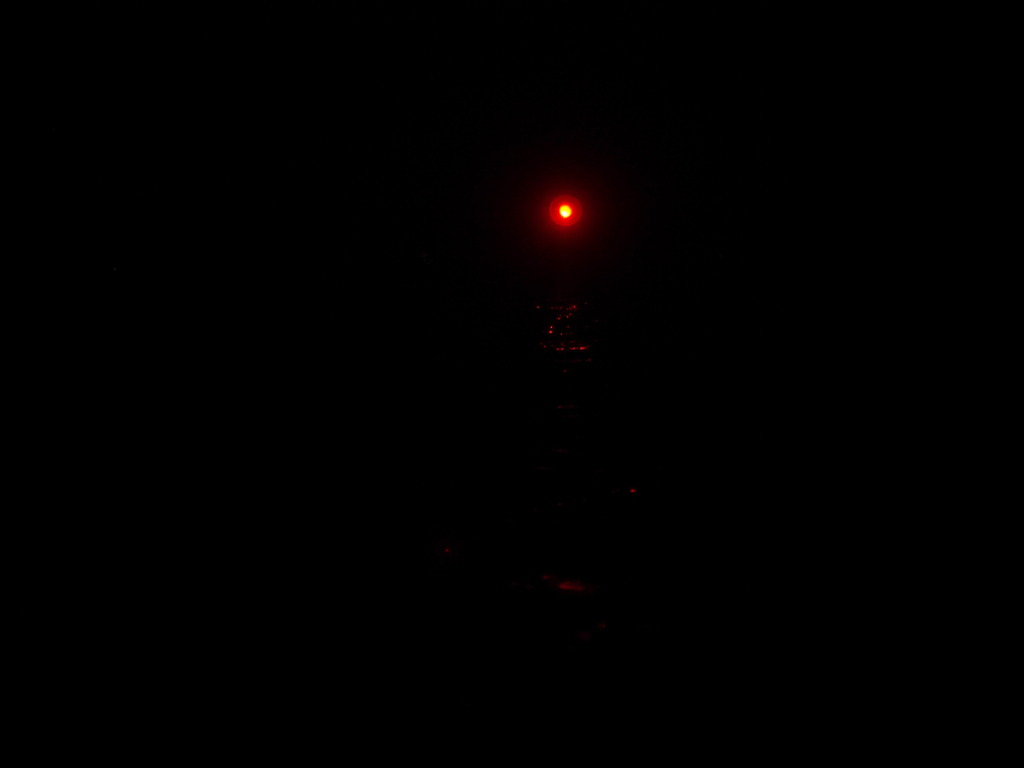
Subscribe via RSS